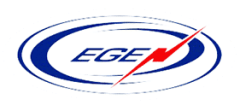- Your cart is empty
- Continue Shopping
Packaging machinery is used throughout all packaging operations, involving primary packages to distribution packs. This includes many packaging processes: fabrication, cleaning, filling, sealing, combining, labeling, overwrapping, palletizing.
Some packaging operations cannot be accomplished without packaging equipment. For example many packages include heat seals to prepare or seal a package. Heat sealers are needed, even in slow labor-intensive operations.
With many industries, the effectiveness of the heat seal is critical to product safety so the heat sealing operation must closely controlled with documented Verification and validation protocols. Food, drug, and medical regulations require consistent seals on packages. Proper equipment is needed.
Packaging operations can be designed for variable package sizes and forms or for handling only uniform packages, where the machinery or packaging line is adjustable between production runs. Certainly slow manual operations allow workers to be flexible to package variation but also some automated lines can handle significant random variation.[1]
Moving from manual operations, through semi-automatic operations to fully automated packaging lines offers advantages to some packagers. Other than the obvious control of labor costs, quality can be more consistent, and throughput can be optimized.[2]
Efforts at packaging line automation increasingly use programmable logic controllers [3] and robotics.[4]
Large fully automatic packaging lines can involve several pieces of major equipment from different manufactures as well as conveyors and ancillary equipment. Integrating such systems can be a challenge. Often consultants or external engineering firms are used to coordinate large projects.
Types of machinery
Packaging machines may be of the following general types:
- Accumulating and collating machines
- Blister packs, skin packs and vacuum packaging machines
- Bottle caps equipment, over-capping, lidding, closing, seaming and sealing machines
- Box, case, tray, and carrier forming, packing, unpacking, closing, and sealing machines
- Cartoning machines
- Cleaning, sterilizing, cooling and drying machines
- Coding, printing, marking, stamping, and imprinting machines
- Converting machines
- Conveyor belts, accumulating and related machines
- Feeding, orienting, placing and related machines
- Filling machines: handling dry, powdered, solid, liquid, gas, or viscous products
- Inspecting: visual, sound, metal detecting, etc.
- Label dispensers, printers, and applicators
- Orienting, unscrambling machines
- Package filling and closing machines
- Palletizing, depalletizing, unit load assembly
- Product identification: labeling, marking, etc.
- Sealing machines: heat sealer, tape, or glue units
- Security seals, tamper-evident bands, etc equipment
- Slitting machines, perforating, etc
- Strapping machines, banding machines, etc.
- Weighing machines: check weigher, multihead weigher[10]
- Wrapping machines: flowwrapping, stretch wrapping, shrink wrap
- Form, fill and seal machines, bags, pouches
- Other specialty machinery: slitters, laser cutters, parts attachment, etc.


